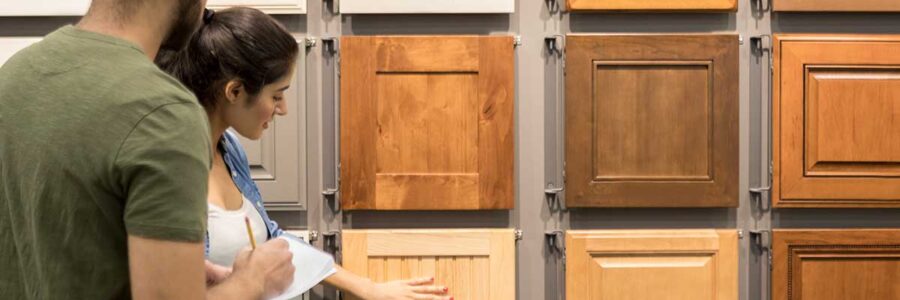When planning home renovations, particularly those involving cabinets, it’s vital to consider the materials used. Cabinets play a crucial role in a home’s functionality and aesthetics, but many commonly used materials can pose significant health risks due to the presence of volatile organic compounds (VOCs). Understanding these risks and opting for safer alternatives is essential for maintaining a healthy home environment.
Understanding VOCs
Volatile organic compounds (VOCs) are chemicals that easily become vapors or gases at room temperature. They are commonly found in household products such as paints, cleaning supplies, and building materials like cabinets. Prolonged exposure to VOCs can result in various health issues, including respiratory problems, headaches, dizziness, and more severe conditions like liver and kidney damage or even cancer.
Assessing the Toxicity of Common Cabinet Materials
Different cabinet materials have varying levels of toxicity. Here’s a detailed look at some of the most common materials, ranked from most toxic to least toxic:
- Particleboard and Medium-Density Fiberboard (MDF)
- Composition and Concerns: These materials are made by binding wood particles or fibers with resin, which often contains formaldehyde. Formaldehyde is a known carcinogen that releases harmful VOCs into the air.
- Health Risks: Exposure to VOCs from these materials can lead to allergies, respiratory issues, hormone disruptions, and other serious health problems.
- Alternatives: Some formaldehyde-free MDF options use Methylene diphenyl diisocyanate (MDI) as a binder, reducing formaldehyde exposure. However, these alternatives may still emit other chemicals.
- Baltic Birch
- Composition and Concerns: Baltic Birch is marketed as formaldehyde-free but still contains VOCs that can off-gas into the home.
- Health Risks: While less toxic than MDF and particleboard, Baltic Birch contributes to indoor air pollution and potential health issues.
- Suitability: It’s a better option than MDF and particleboard but not the safest choice.
- PureBond (Plywood)
- Composition and Concerns: PureBond plywood is designed to be free from formaldehyde and VOCs, making it one of the least toxic options.
- Health Benefits: This material significantly reduces exposure to harmful chemicals, promoting a healthier living environment.
- Advantages: PureBond plywood is non-toxic, durable, and aesthetically pleasing, making it ideal for health-conscious homeowners.
The Importance of Non-Toxic Choices
The materials used in home construction and renovation have a lasting impact on health and well-being. Opting for cheaper, more convenient materials might offer immediate savings, but the hidden health costs can be substantial. Prolonged exposure to toxic chemicals can lead to chronic health issues, highlighting the importance of choosing non-toxic materials.
Tips for Healthier Home Renovations
- Thorough Research: Research their chemical composition and health impacts before selecting materials. Look for certifications such as GREENGUARD or other third-party validations that confirm low VOC emissions.
- Improve Indoor Air Quality: To reduce indoor pollutants, use air purifiers and increase ventilation during and after renovations.
- Consult Experts: Work with contractors and designers who are knowledgeable about non-toxic building materials and practices.
- Verify Claims: Be cautious of products that claim to be green or eco-friendly. Always verify these claims through independent sources to ensure their validity.
- Regular Maintenance: Clean and maintain cabinets regularly to minimize the accumulation of dust and other pollutants that can interact with VOCs.
Conclusion
Choosing the right materials for cabinetry is crucial for maintaining a healthy home environment. Opting for less toxic options like PureBond plywood and being mindful of the potential dangers of VOCs can help create a safer, healthier living space. Making informed choices about building materials today can lead to a healthier future, emphasizing the importance of prioritizing health and well-being in home renovations.
By understanding the risks associated with different cabinet materials and implementing strategies to reduce exposure, homeowners can ensure their living spaces are safe and healthy for themselves and their families.
References:
- David, Elena, and Violeta-Carolina Niculescu. “Volatile Organic Compounds (VOCs) as Environmental Pollutants: Occurrence and Mitigation Using Nanomaterials.” International Journal of Environmental Research and Public Health, vol. 18, no. 24, Dec. 2021, p. 13147. PubMed Central, https://doi.org/10.3390/ijerph182413147.
- Thetkathuek, Anamai, et al. “Respiratory Symptoms Due to Occupational Exposure to Formaldehyde and MDF Dust in a MDF Furniture Factory in Eastern Thailand.” Advances in Preventive Medicine, vol. 2016, 2016, p. 3705824. PubMed Central, https://doi.org/10.1155/2016/3705824.
- PureBond. “Healthy Living & Indoor Air Quality | PureBond® Plywood.” PureBond, https://purebondplywood.com/library/information/healthy-living-indoor-air-quality/. Accessed 3 July 2024.
- Institute of Medicine (US) Roundtable on Environmental Health Sciences, Research. “Presentation Abstracts.” Green Healthcare Institutions: Health, Environment, and Economics: Workshop Summary, National Academies Press (US), 2007. www.ncbi.nlm.nih.gov, https://www.ncbi.nlm.nih.gov/sites/books/NBK54155/.


